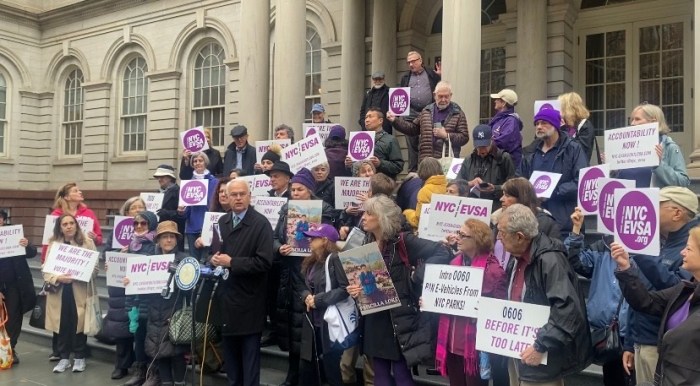Public Advocate Calls For NYPD Report
Public Advocate Bill de Blasio called on the Bloomberg administration last week to report crime statistics for all major city parks.
In a letter sent last Tuesday, Sept. 25, de Blasio called on Mayor Michael Bloomberg and Police Commissioner Raymond Kelly to come into full compliance with a 2005 City Council law requiring crime reporting for all parks larger than one acre. According to the public advocate, crime statistics are available for only 31 city parks, including six in Queens and six in Brooklyn.
“For a city that wrote the book on data-driven crime fighting, the dearth of statistics on crime in our parks is astounding. We need to fix these blind spots immediately, before another New Yorker is victimized in one of our public spaces,” said de Blasio.
The call came following a recent sexual assault in Hudson River Park in Manhattan, which is among hundreds of parks, playgrounds and recreational centers for which crime data is unavailable. The lack of available information on crime prevents more strategic policing and better community engagement, de Blasio noted.
The Queens parks for which crime statistics are released are Alley Pond Park, Cunningham Park, Flushing Meadows Corona Park, Forest Park, Kissena Park and Rockaway Com- munity Park. The Brooklyn parks are Canarsie Park, Dyker Beach Park, Joseph T. McGuire Park, Marine Park, Paerdegat Park and Prospect Park.
In his letter to Bloomberg and Kelly, de Blasio stated that “the 2005 law allowed the NYPD to set its own timetable for implementation based on what the city deemed ‘technologically feasible.'”
“With data on only two percent of parks available seven years after the legislation took effect, I believe that approach has been insufficient,” de Blasio wrote. “I am supporting legislation removing that loophole and requiring immediate implementation. The spike in crime occurring in our parks demands a coordinated response. We need to address the sustained reduction in Parks Enforcement officers and improve interagency coordination. But data must inform all of our efforts.”


































